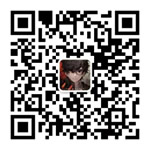A Software Radio-based UHF RFID Reader for PH/YMAC
RFID
A Software Radio-based UHF RFID Reader
for PHY/MAC Experimentation
Michael Buettner University of Washington buettner@cs.washington.edu
David Wetherall University of Washington djw@cs.washington.edu
Abstract—We present the design and evaluation of a ?exible UHF RFID reader that enables new PHY/MAC designs to be prototyped and evaluated.Our reader is built using the USRP software radio platform in conjunction with software we developed in the open-source GNU Radio framework.We believe it is the?rst inexpensive tool that readily enables changes to the physical and MAC layer of RFID systems.We evaluate our reader and show that it can inventory commercial tags out to6meters,which approximates the range of a commercial reader with com-parable transmit power.We then show two applications of our reader.The?rst evaluates the real-world performance of the EPC frame selection algorithm and?nds that it performs better than expected.Second,using the Intel WISP programmable RFID tag,we implement and evaluate an extension to the Gen2standard that results in up to a ?ve-fold increase in sample rate for streamed sensor data.
I.I NTRODUCTION
Radio Frequency IDenti?cation(RFID)is an emerging wireless technology that allows small,inexpensive com-puter chips to be remotely powered and interrogated for identi?ers and other information.While there are many kinds of RFID,e.g.,HF RFID in credit cards,recent advances in RFID have largely focused on passive UHF RFID as standardized by the EPC Class-1Generation-2 (Gen2)speci?cation in2004[1].
The application space for UHF RFID is rapidly ex-panding,and the ability to experiment with realistic sys-tems is becoming increasingly important.For instance, the reliability and performance of RFID readers is of interest,especially in dense,?ne-grained settings(such as item-level tracking)and for demanding applications (such as searching over the states of objects in a ubi-comp application).However,there is very little published information on low-level RFID performance in these settings.Prior work on the topic concludes that current reader systems suffer various performance degradations and there is ample opportunity for improvement[2],[3]. Additionally,privacy and security issues are central to any application that tracks objects and people directly or indirectly.Yet almost all work on RFID security using lightweight cryptographic schemes has been done via paper designs and analysis rather than experimentation; we are aware of only one exception[4].
Looking ahead,as RFID devices advance to include computation,storage and sensing[5],[6],[7],alternative MAC and PHY layer designs will inevitably emerge and need to be evaluated.This is because the Gen2protocol was designed with simple object identi?cation in mind and is a poor?t for gathering sensor data or supporting complex interactions with devices[8].
The dearth of low-level experimentation with RFID systems is a consequence of the current lack of tools available to researchers.Existing RFID readers are gen-erally black box systems which provide only limited con-?guration and return high-level results simply indicating tags that are in range.They do not provide the?exibility to observe or modify the MAC or PHY layer behavior. This makes the study of existing protocols dif?cult,let alone experimentation with alternative designs.High-end RFID test equipment is available in the form of protocol analyzers and systems have been built to measure tag performance[9].While well suited for conformance testing,they are closed source,expensive(>$80K),and generally do not allow complete control over the PHY and MAC layers.
In this paper,we present what we believe is the?rst open-source platform for low-level UHF RFID experi-mentation that gives users control of the PHY and MAC layers.It consists of the Universal Software Radio Pe-ripheral(USRP)and software we have developed using GNU Radio that implements a EPC Class-1Generation-2reader.Because all signal processing is performed on a standard Linux PC,MAC and PHY functionality can be modi?ed simply by re-writing user-level software. Our platform provides a high degree of?exibility while costing less than$1500.
We make two main contributions in this work.First, we present the design and implementation of our reader and show how a low-cost SDR platform and open-source software can be used to create a powerful tool for UHF RFID experimentation.We describe how we overcame the limitations inherent to the hardware which made implementing the reader dif?cult,and evaluate the reader performance,?nding that it can inter-operate with standard Gen2tags at a range of up to6meters.This
RFID
closely approximates the range of a commercial RFID reader when using the same transmit power of27dBm. Second,we present two applications of our reader that demonstrate its usefulness as a research tool.The ?rst application uses our reader and commercial RFID tags to study the performance of the frame size selection algorithm described in the EPC Gen2standard.We?nd that the algorithm’s performance is within7%of the maximum rate achieve using an oracle based algorithm. Also,because of RF capture,the algorithm achieves a 44%slot ef?ciency which is well above the the best expected ef?ciency of37%using the standard collision model.This has implications for how such algorithms are designed and analyzed.
The second application shows that,when paired with an equally?exible RFID tag,our reader can be used to develop entirely new MAC protocols.We demonstrate this capability by prototyping an extension to the Gen2 standard to accommodate high-rate streaming data for sensor-equipped RFID tags.Through experiments we show that our extension can provide a5X improvement in sampling rate compared to the normal Gen2mechanism for reading data from tags.
The software described in this document is open sour …… 此处隐藏:35939字,全部文档内容请下载后查看。喜欢就下载吧 ……
相关推荐:
- [求职职场]加法运算定律的运用练习题
- [求职职场]大型石油化工工业过程节能新技术
- [求职职场]2015-2020年中国箱纸板行业分析与投资
- [求职职场]NADEX-IWC5A点焊机故障代码
- [求职职场]英语阅读 非常有用
- [求职职场]鲁卫疾控发〔2012〕2号(联合,印发山东
- [求职职场]2014年莆田公务员行测技巧:数字推理的
- [求职职场]基于最近发展区理论的高中数学课堂有效
- [求职职场]与贸易有关的知识产权协议
- [求职职场]【王风范】微演说·职场演说三
- [求职职场]新时代国珍健康大课堂
- [求职职场]群论期末考试复习题
- [求职职场]施工现场消防安全专项施工方案(范本)-
- [求职职场]初中物理光学知识点归纳完美版
- [求职职场]毕业设计总结与体会范文
- [求职职场]江南大学2018年上半年展示设计第1阶段
- [求职职场]景尚乡民兵参战支前保障方案
- [求职职场]【优质】2019年工会职工之家建设工作总
- [求职职场]数据库技术与应用—SQL Server 2008(第
- [求职职场]汽车变速箱构造与工作原理
- 首钢工业区工业遗产资源保护与再利用研
- 第4课 《大学》节选
- 2016程序文件——检验检测结果发布程序
- 2011年高考试题文言文阅读全解释__2011
- 化学是一门基础的自然科学
- 海外做市商制度的借鉴意义
- 外国建筑史复习资料(
- 七年级下思想品德期末综合测试(二)
- 思政课部2013年上学期教学工作总结
- 电大国际公法任务3 0004
- 《圆的认识》教学设计
- 中国轨道交通牵引变流器行业市场发展调
- 中泰证券#定期报告:坚守时代硬科技和
- 浅论企业财务管理与企业经营投资风险的
- 大功率半导体激光器光纤耦合技术调研报
- 中国传统家具的现状与发展探讨
- Broadcom数字电视芯片助海尔扩展高清电
- 新HSK4词汇练习 超全(五)
- 2013届高考数学单元考点复习12
- 雨霖铃精品课件




